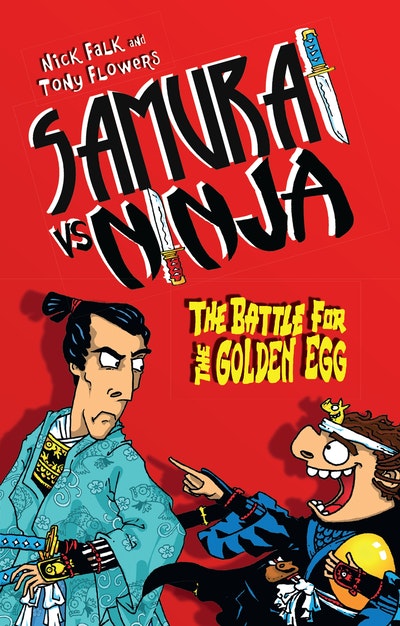Samurai vs Ninja 1: The Battle for the Golden Egg
- Published: 1 April 2015
- ISBN: 9780857986061
- Imprint: Random House Australia
- Format: EBook
- Pages: 96
While written in a fashion that will draw in those newly independent readers there is a great opportunity to expand vocabulary including some Japanese language – ably explained in a glossary at the end of each book . . . These are exactly the sorts of stories that could be the basis of some creative writing.
Sue Warren, OZTL_NET
Aside from its entertainment value, the Samurai vs Ninja series also has educational elements. In between insults and fart jokes, Falk and Flowers use actual Japanese terms and provide a glossary with them at the end of their stories – children will learn how to call each other an ugly pig (mink-u-i buta) or an idiot (baka). So if your children are in the six years age bracket and love action and a good laugh, the Samurai vs Ninja series is right up their alley.
Anya Whitelaw, The Western Advocate
Capitalising on the craze for things Japanese as manga-type stories permeate through to our youngest readers, this is an energetic, fast-moving series that will capture the imaginations of younger readers who are ready for independent reading but still need the support of short text and illustrations which are integral to that text.
Barbara Braxton, OZTL_NET
The inclusion of Japanese terms adds meaning and depth to an otherwise plainly funny take on the actions of ancient warriors in a historical and cultural setting. This is an ideal book for independent early readers, and particularly those who love a good prank.
Romi Sharp, Reading Time
In short this series is hilarious. The characters are good and bad, clever and stupid, selfish and team-spirited. It is great fun to read aloud and the class of year one students who were my audience for the readings begged for more every time. It is great fun to listen to and the drawings had the students in fits of giggles as I read. It is not often that such engaging, high quality literature comes along for this age group of children.
Robyn English, Australian Literacy Educators' Association





